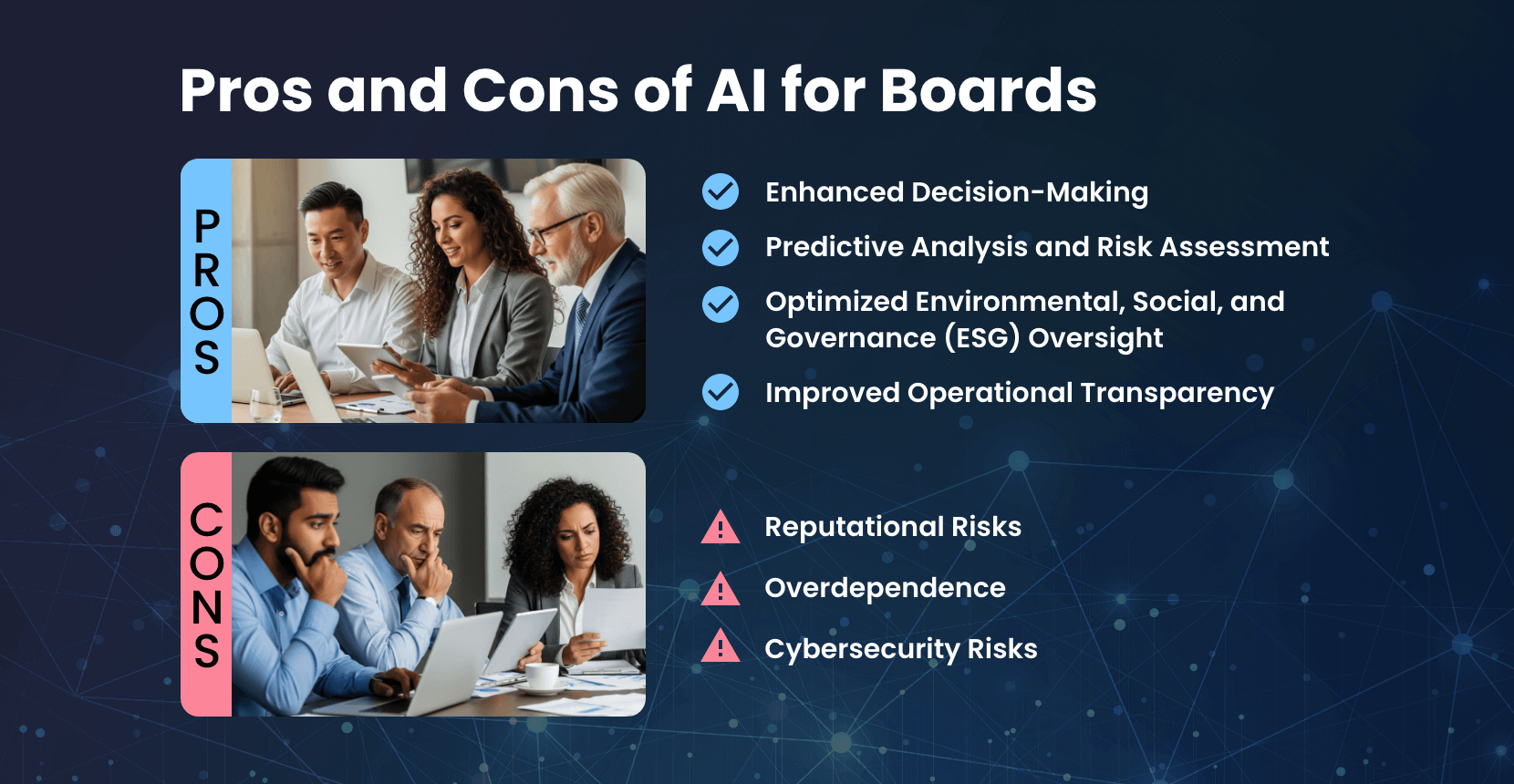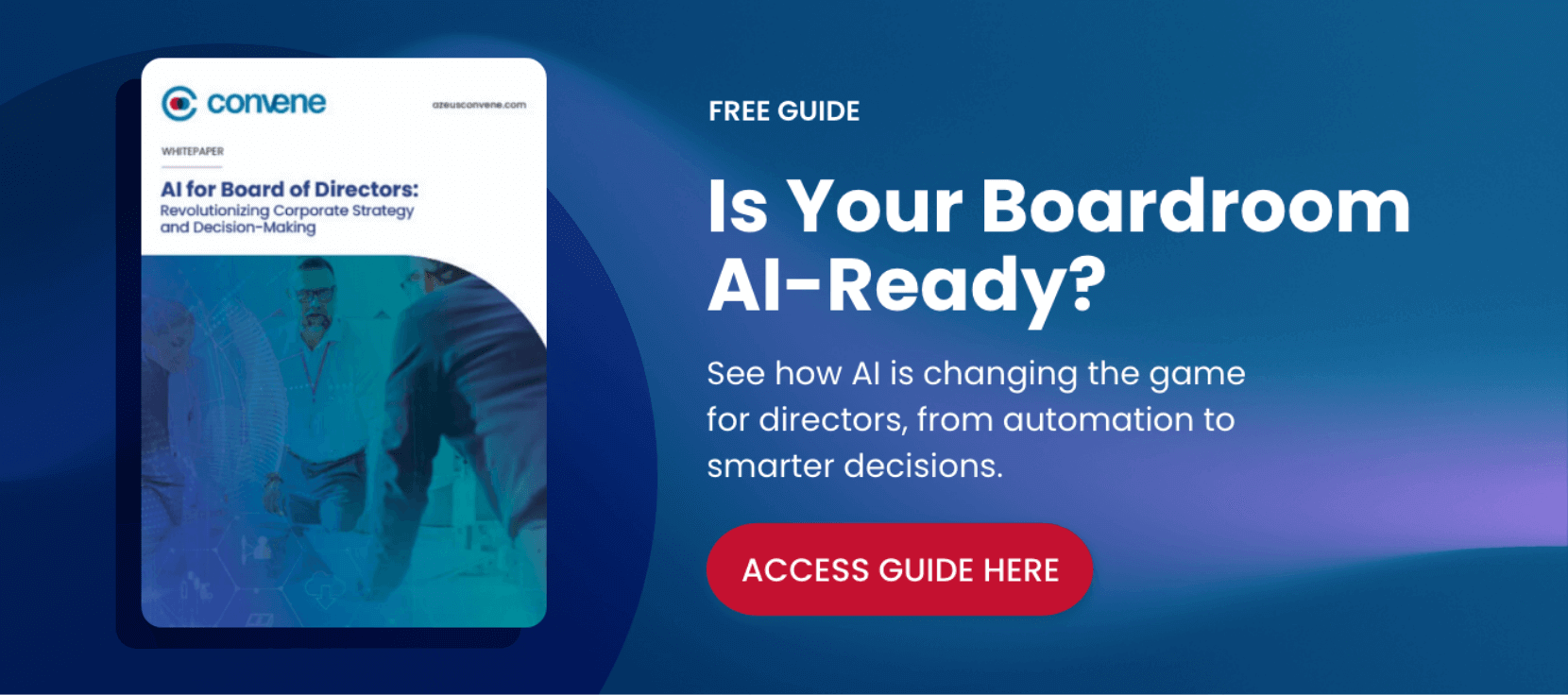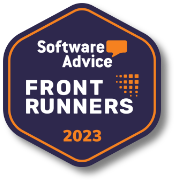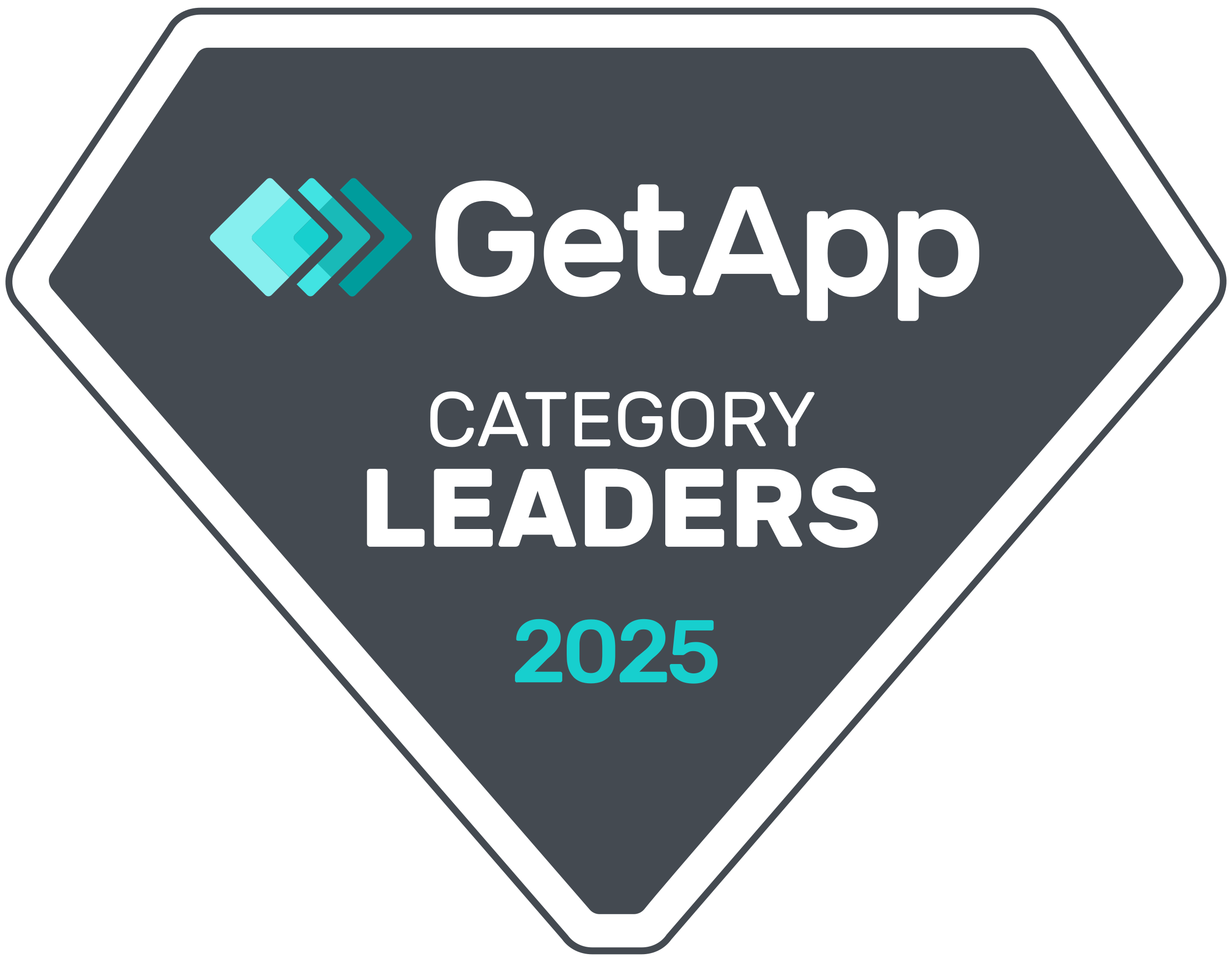The year 2022 saw the launch of OpenAI’s generative artificial intelligence (AI) chatbot, ChatGPT, which caused an enormous shift in how individuals perceive and utilize AI. What was once regarded with cautious interest by many suddenly became accessible and widely embraced. Soon after, business leaders began exploring and experimenting with how generative AI could improve work conditions and ultimately generate value.
The 2024 McKinsey Global Survey shows that among 1,363 participants, a large majority (72%) report their organizations have adopted AI in at least one area of the business. This number marks a significant leap from the roughly 50% average recorded over the past six years, indicating that AI adoption is accelerating at an unprecedented pace.
Despite this, however, many boards are still catching up. Deloitte Global’s 2024 survey of 468 board members across 57 countries found that only 14% of boards discuss AI at every meeting, 25% address it semiannually, and 16% annually. The rest of the respondents reported that AI is not yet on their board’s agenda. The study also revealed that although many are eager to devote more time to AI oversight, nearly 80% of boards have little to no experience in AI. This brings them face-to-face with several uncertainties about how to govern AI responsibly.
It also raises important questions like: How can AI systems guarantee safe and reliable practices? What obligations and risks come with it? And how can leaders ensure it aligns with their business values?
In this article, we’ll give you the answers to these questions and provide an overview of how AI is changing the four corners of the boardroom.
What is artificial intelligence?
Artificial intelligence, or AI, refers to the development of robots and computer systems that can perform tasks that used to require human intelligence. These functions typically include pattern recognition, predictive analytics, and problem-solving. Some of the key branches of AI are:

Machine Learning (ML)
This pertains to algorithms that learn from historical data to improve performance over time. Have you ever thought about how YouTube decides what videos to place on your homepage? They use machine learning to identify user behavior and provide personalized video recommendations based on your watch history and engagement patterns. Fraud in financial institutions is detected using the same technology.
Natural Language Processing (NLP)
This enables machines to understand and generate human language. Generative AI has boosted NLP’s capabilities by creating new content based on behavioral patterns. ChatGPT and other AI chatbots like Google’s Gemini are by far the most popular and successful applications of NLP, apart from customer service bots and real-time translation applications.
Robotic Process Automation (RPA)
This refers to the technology that helps streamline and automate repetitive administrative tasks. When used properly, RPA can help set up manual tasks such as invoice processing, data extraction, and form filling to run independently with minimal to no human intervention.
What is AI governance?
The term AI governance refers to the policies, frameworks, and ethical guidelines that oversee the development and use of AI technologies within an organization. Put simply, it guarantees ethical and transparent use of AI systems. Its primary objectives include:
- Ensuring that AI-powered tools and software used in the business align with the company’s and community’s values.
- Promoting transparency in how AI systems operate to build trust and accountability.
- Minimizing exposure to risks related to bias, discrimination, and misuse.
- Adhering to legal and regulatory requirements.
To promote responsible and ethical use of AI, boards need to establish comprehensive AI governance and management plans. These not only set expectations for ethical and transparent use but also help ensure everyone is aligned and accountable to how AI is applied across the organization.
Pros and Cons of AI for Boards
As boards start to see AI as a more common and influential tool in the boardroom, it has become increasingly important to be knowledgeable of its benefits and potential risks.

Benefits of AI in the boardroom
Enhanced Decision-Making
Boards can use AI to quickly interpret complex datasets, provide smart insights, and analyze competitor behavior. During meetings, for instance, if the board needs to look into specific data, AI can provide the information, allowing for easier decision-making and better alignment with short- and long-term goals.
Predictive Analysis and Risk Assessment
AI tools can help review compliance mandates by tracking trends across various jurisdictions and instantly flagging risks before they become a problem.
Optimized Environmental, Social, and Governance (ESG) Oversight
Boards are more accountable than ever for ESG outcomes. To somehow ease their burdens, AI can assess ESG data in real-time, providing companies with an under-the-hood look at their carbon footprint, workforce engagement, and supply chain ethics. AI solutions can also simplify ESG reporting by automating data collection and validation.
Improved Operational Transparency
AI can help make meetings, from preparation to follow-up, more efficient by supporting faster agenda preparation, centralizing board information, and automating meeting summaries.
Risks of using AI
Reputational Risks
An AI system that operates autonomously can be a threat to an organization’s reputation. Due to the lack of data, misguided AI may strengthen negative biases or inadvertently exclude underrepresented groups. One example is when Amazon Rekognition’s Face Search was accused of grave gender bias in 2019 due to its tech mislabeling darker-skinned women as men 31% of the time, according to one study.
Overdependence
Board members might become too reliant upon AI suggestions and guidance and fail to objectively assess the situation at hand. When decisions are made solely based on AI outputs, without questioning or validating them, important nuances may be missed. This overreliance can create blind spots, which can jeopardize the board’s decision-making ability.
Cybersecurity Risks
The fact is that AI can be hacked, manipulated, and weaponized. Once this happens, it can deliver outputs based on misinformation fed into the system. Hacked AI tools can also be a gateway for cybercriminals to access classified business information and compromise sensitive networks.
How to Manage Risks Associated with AI
Only 46% of people across 47 countries put their trust in AI systems. This data is according to a survey done by the University of Melbourne and KPMG involving 48,340 participants. This means that more than half of individuals worldwide still do not fully trust AI to make fair and responsible decisions. Hence, it underscores the need for organizations to implement effective AI governance. One way to build that trust is by putting clear governance practices in place.
To mitigate risks associated with using AI, here’s a list of proactive strategies you can do:
1. Bias Mitigation
Amazon faced a public backlash in 2018 when its AI recruitment tool, designed to review resumes, was found to be biased against women. The now-defunct tool was reported to have learned this behavior from historical data that reflected gender imbalances in the company’s workforce.
What does this imply? AI is only as good as the data it is trained on. If the data you input is biased, the AI models will reflect those biases. Companies can mitigate this risk by ensuring that the data used to create AI models is diverse, representative, and transparent. Regular testing on the trained models to adjust for any findings is also recommended to keep accuracy and fairness.
2. Data Privacy Protection and Compliance
AI needs a lot of data to function, and this means significant privacy concerns. Boards must ensure that any AI software applications they use are in line with current data privacy regulations, such as the General Data Protection Regulation (GDPR); failure to do so can result in severe fines and damage to brand integrity.
To address this, boards should have an inherent compliance strategy to align with current and anticipated regulations. Given that the technology behind AI is ever-changing, government agencies also want to stabilize relative risk through newly established regulations. Therefore, a robust AI compliance strategy, such as an AI compliance mapping capability, must be implemented to align the organization’s strategy with regulatory and industry standards. Boards must proactively integrate these considerations from day one.
3. Incident Response Planning
AI, like any other technology, can fail, which can put business operations that heavily rely on these machines on hold. Such disruptions can cost several hundred thousand dollars per minute if not promptly addressed. Boards should develop their incident response plans in detail, outlining a clear action plan to follow in the event that an AI system does not function as intended. These plans should include clear communication strategies and corrective actions to mitigate damage.
AI in the Boardroom: Strategies for Effective Adoption
Integrating AI into the boardroom is no longer a borrowed concept from the future; most boards are already using it to shape their organizations today. But to harness AI’s full potential, boards must adopt a structured approach. Here are five actionable tips to effectively integrate AI into the boardroom:

1. Foster AI literacy across the board
AI is now a major component of the strategy and operations of many organizations. Boards must then catch up in order to make more informed decisions. This doesn’t mean every board member needs to become a data scientist, but a solid grasp of AI’s potential and pitfalls is necessary.
One way to do this is to be intentional in promoting continuous AI learning. Join industry events and hold company-wide workshops with an AI focus. Practical training where boards can observe firsthand how AI systems work, and where they can be most beneficial, is key to demystifying concepts and building confidence in AI-driven decision-making.
2. Establish an AI governance committee
Based on the 2024 McKinsey Global Survey, only 18% of organizations have an enterprise-wide council that oversees AI governance. This isn’t ideal, especially in AI-driven boardrooms.
Creating a cross-functional committee with representatives from various departments ensures that AI systems are developed and monitored based on all perspectives. This team can refine AI policies, evaluate implementations, and ensure that everything aligns with both company values and legal obligations, from where they currently stand. It’s a collaborative way to make sure AI is not just technically sound, but also ethically and strategically appropriate.
In addition, the committee should establish AI governance plans to ensure the responsible use of AI across the organization. For instance, an AI cybersecurity framework should be put in place to guide users to follow the best practices online, avoiding data breaches and misuse.
3. Align AI initiatives with organizational strategy
Before diving into any AI initiative, boards should be clear on what the organization hopes to achieve. Are you trying to speed up processes? Improve customer satisfaction? Cut costs?
When AI efforts line up neatly with business goals, the decisions made add value. For example, automating repetitive tasks can speed up the progress and completion of a specific task or project. Aligning these initiatives not only brings clarity but also helps boards figure out which opportunities deserve attention and resources. By raising important questions early on, they help ensure AI works hand-in-hand with the company’s vision instead of becoming another liability.
4. Promote a culture of transparency and accountability
Boards need to make sure everyone is up to date with AI strategies and big decisions made around them. By being upfront about how these systems function, what data they’re using, and how those choices are arrived at, it helps ease uncertainty and worries among staff members. They must also communicate clearly to all members the organization’s AI governance frameworks and plans to make sure that all AI tools and systems are used ethically. Additionally, clearly designating owners for every facet of each project can enhance accountability and ensure consistent tracking of results and facilitate adjustments if needed.
5. Integrate AI for more efficient board meetings
AI can make board meetings run smoothly and efficiently, particularly when it comes to handling routine tasks, with the help of board portals like Convene. During the actual meetings, AI can transcribe discussions and generate comprehensive minutes after the meeting concludes. It can also produce an automated summary and action items, letting board members stay engaged in the discourse without worrying about missing any important details. Furthermore, AI and analytics facilitate better and faster decisions by providing relevant business data in minutes.
To add, some AI-powered board portals also offer personalized virtual assistants and chatbots to give board members quick access to information.
Enabling Smarter and More Responsible AI Governance with Convene

AI has undoubtedly opened countless doors of opportunity to elevate board performance, but only if used wisely. Today’s board leaders must take responsibility to learn, adopt, and govern it with integrity and foresight.
Convene AI, our board portal’s latest AI integration, is your new partner in transforming board leadership through AI-powered support tailored to executive needs. With innovative features like:
- Automated summarization of meetings
- Action suggestions and creation of follow-up tasks
- Refined meeting minutes for clear, accountable communication
- Smart and personalized assistance within the app to quickly resolve issues without needing an external support channel
Convene AI makes board meetings more productive, transparent, and aligned with ethical and responsible governance.
How can you make AI work for you? Book a demo today for a one-on-one consultation.
Jess is a Content Marketing Writer at Convene who commits herself to creating relevant, easy-to-digest, and SEO-friendly content. Before writing articles on governance and board management, she worked as a creative copywriter for a paint company, where she developed a keen eye for detail and a passion for making complex information accessible and enjoyable for readers. In her free time, she’s absorbed in the most random things. Her recent obsession is watching gardening videos for hours and dreaming of someday having her own kitchen garden.











